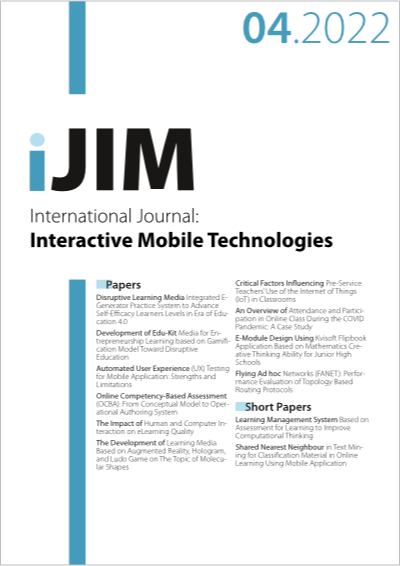The Impact of Human and Computer Interaction on eLearning Quality
DOI:
https://doi.org/10.3991/ijim.v16i04.27309Keywords:
E – learning, E-learning Quality, Platforms, Content QualityAbstract
Over the last few years, particularly during the COVID-19 pandemic, the stage of education has clearly shifted from face-to-face instruction to e-learning. Human-Computer Interaction (HCI) paved the way for developing alternative and advanced methods for implementing the concept of e-learning by identifying what aids educational applications and platforms in visualizing content and thus providing students and their education with easy access in their homes during quarantine and providing them with easy access to educational materials throughout time. Students' impressions of the impact of the human-computer interaction process on the quality of e-learning at Tafila Technical University are discussed in this study. Within one year and four months of the COVID-19 quarantine, students got sufficient experience to apply e-learning. Students responded to a questionnaire that contained closed-ended questions. The responses were analyzed to ascertain the influence of the continual human-computer interaction process. The study's primary objective was to determine the beneficial effect of this contact on the quality of e-learning. Despite their academic and academic performance being greatly impacted by the COVID-19 epidemic, students' positive attitudes toward e-learning have been extremely enthusiastic.
Downloads
Published
How to Cite
Issue
Section
License
Copyright (c) 2022 Farhan Alebeisat

This work is licensed under a Creative Commons Attribution 4.0 International License.


